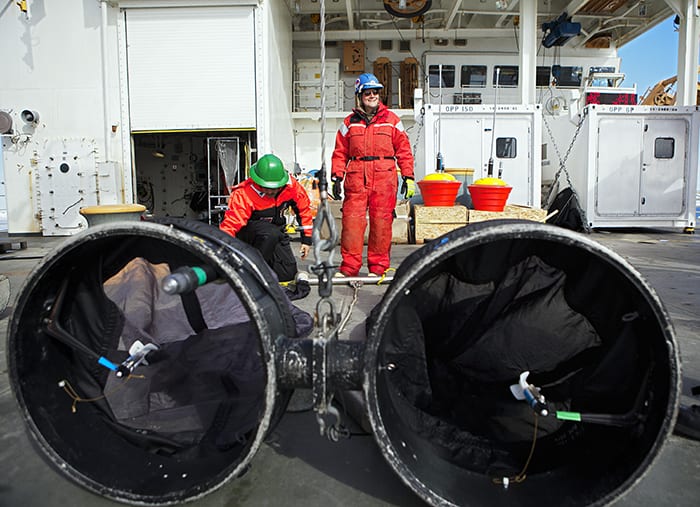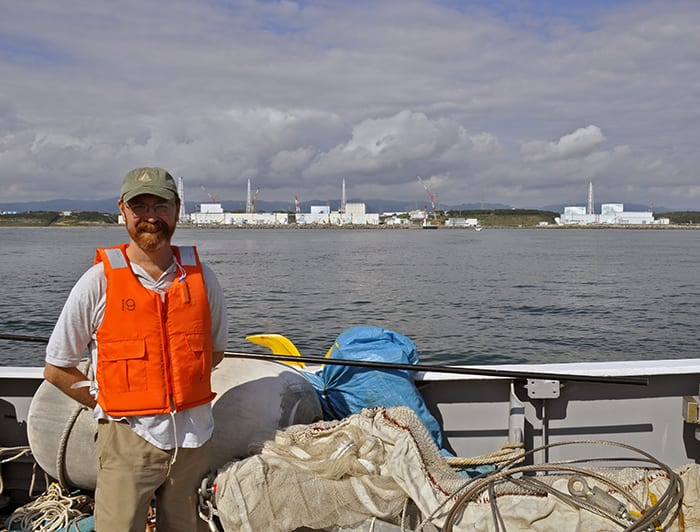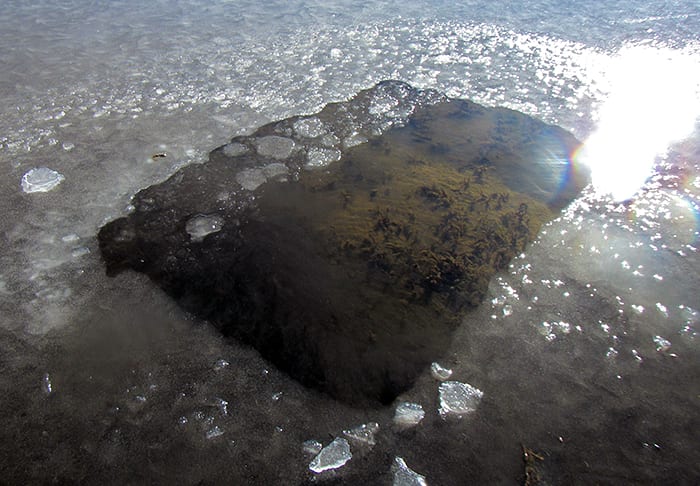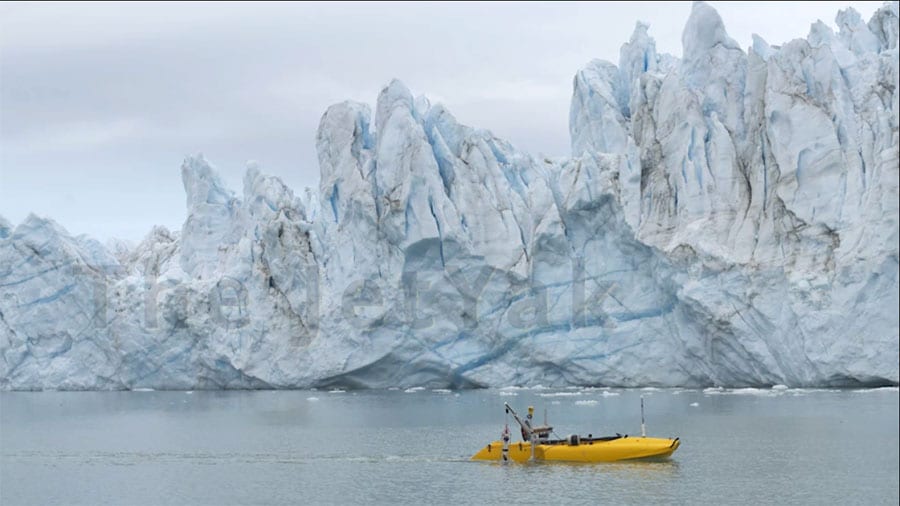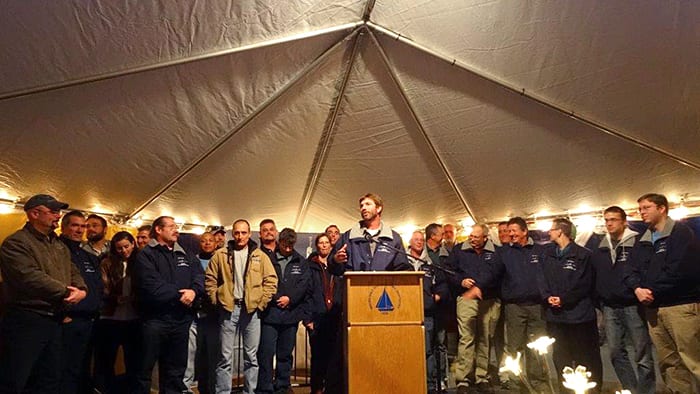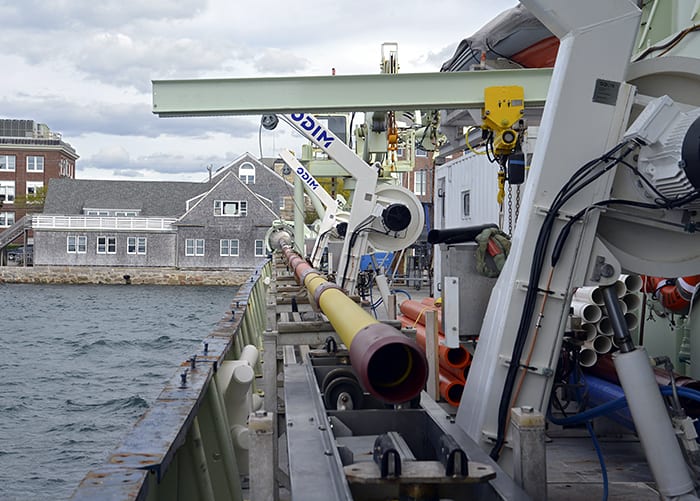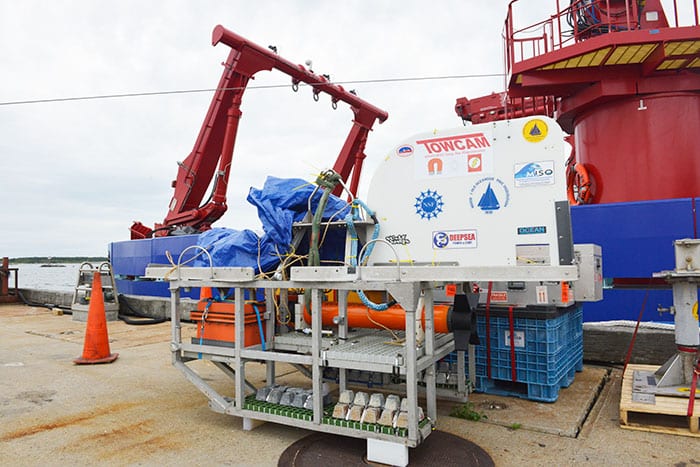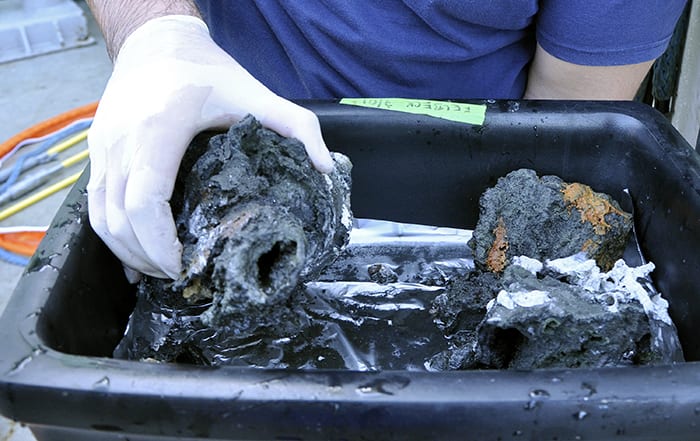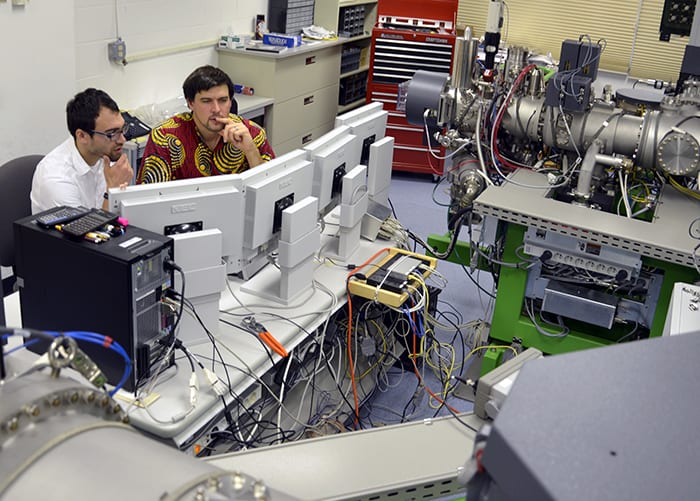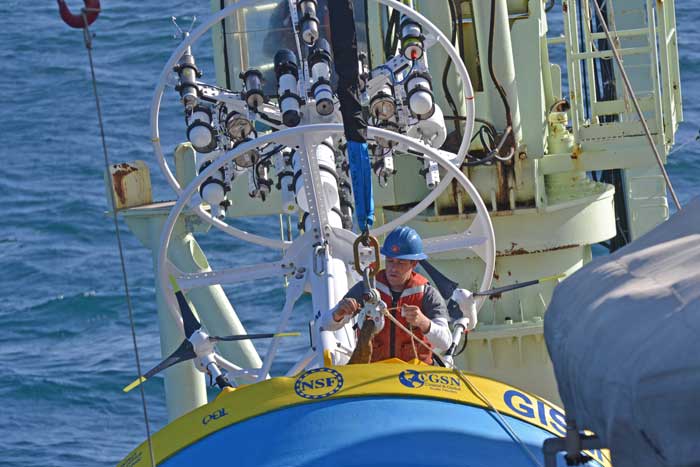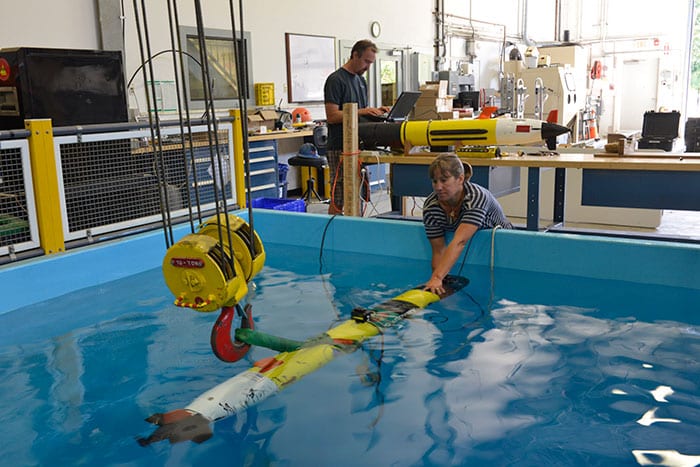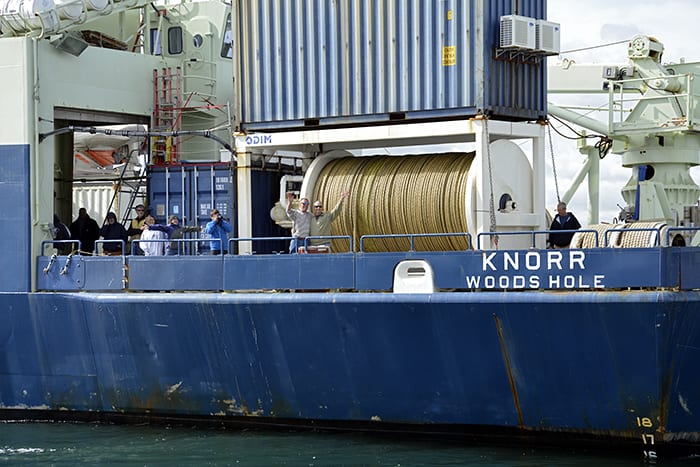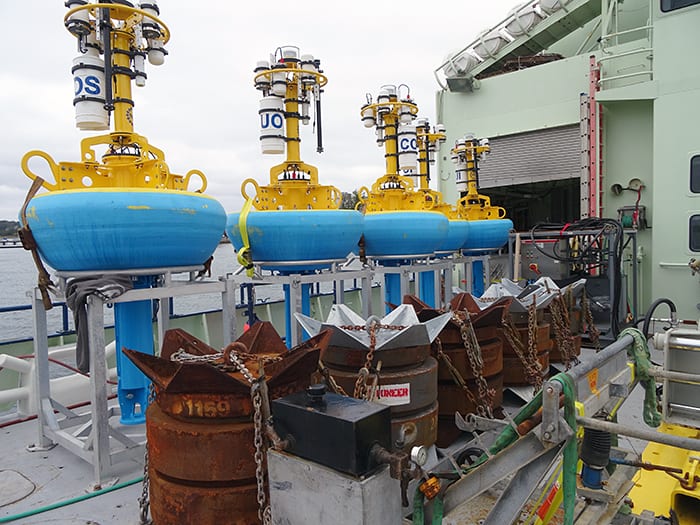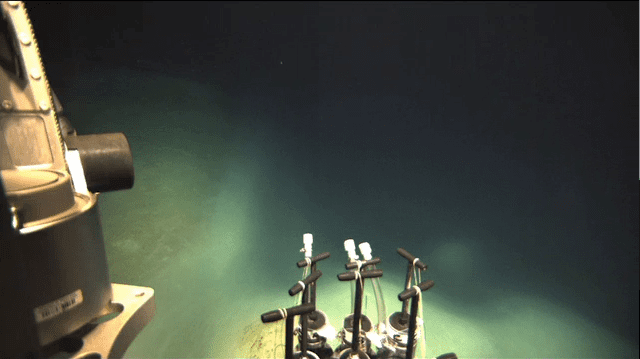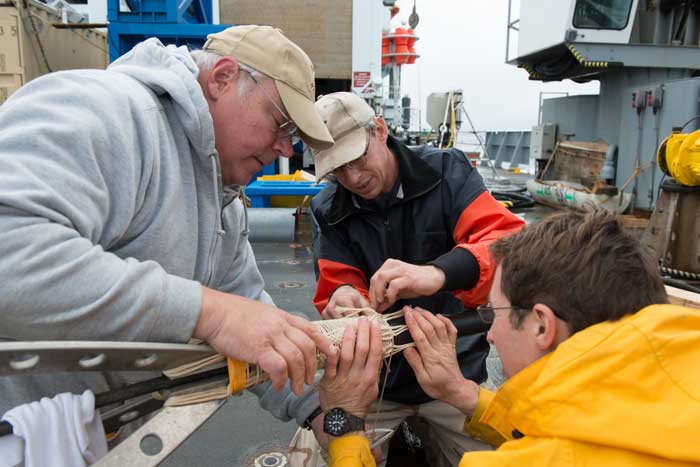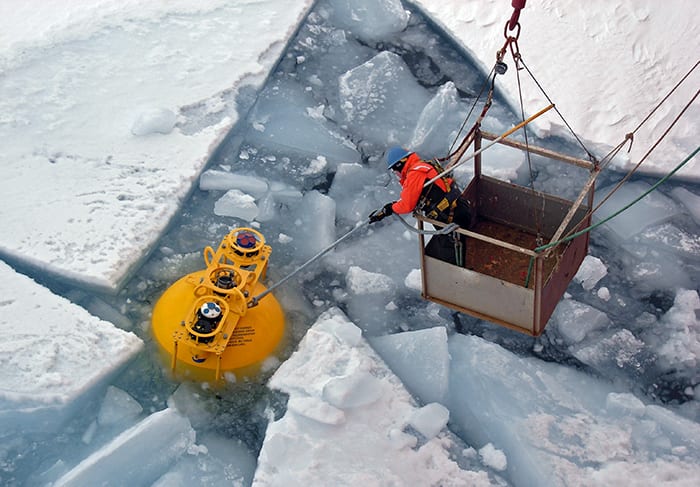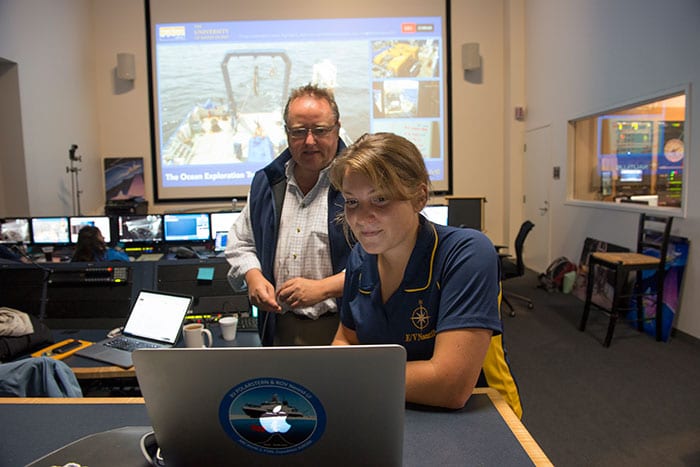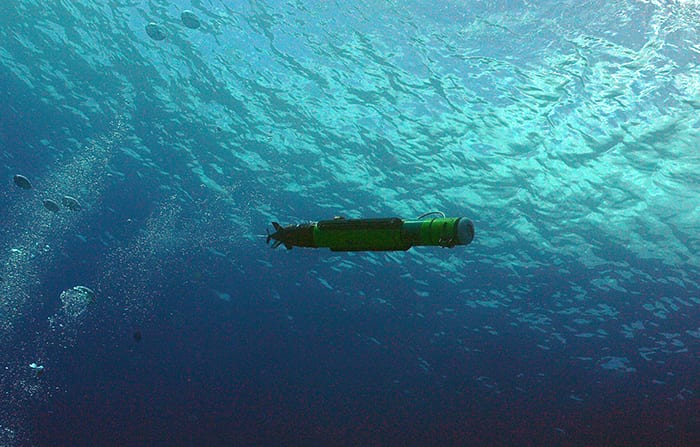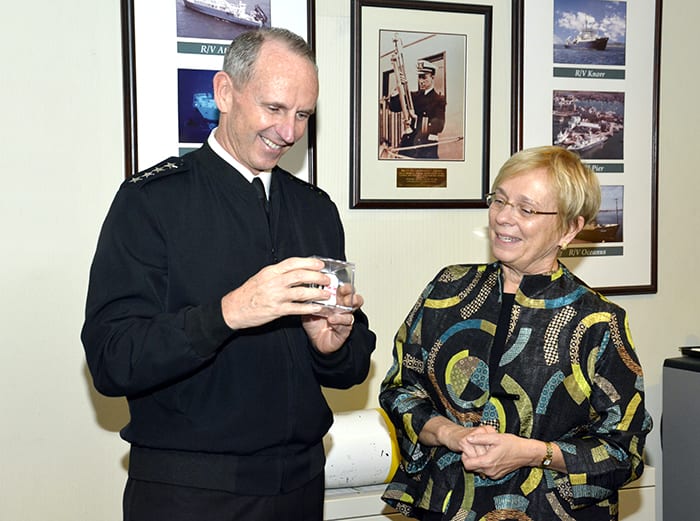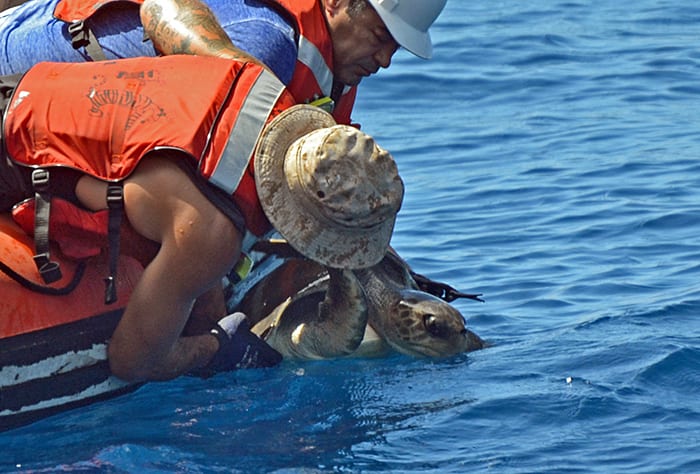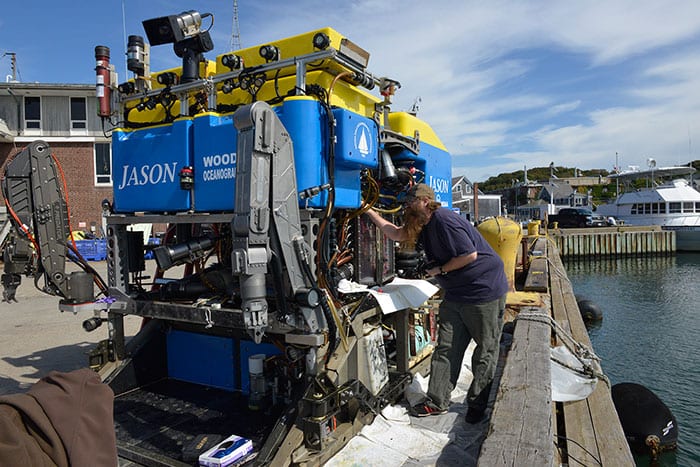Multimedia
Listening to Bongos
WHOI biologist Carin Ashjian enjoys a sunny moment on deck of the U.S. Coast Guard icebreaker Healy with her bongo nets. During the Arctic Spring expedition to the Chukchi Sea this…
Read MoreClass Field Trip
Students from a course entitled “Fundamentals of Shellfish Farming” offered by Woods Hole Sea Grant and the Cape Cod Cooperative Extension hiked out to the tidal flats to tour a shellfish aquaculture operation…
Read MoreClose-up
In September 2013 WHOI marine chemist Ken Buesseler traveled with a group of Japanese colleagues to the northeastern coast of Japan within one kilometer (one-half mile) of the damaged nuclear…
Read MoreIce Breaker
WHOI biogeochemist Amanda Spivak and guest student Kelsey Gosselin had to clear ice from a frozen pond in Rowley, Mass., last month to get access to the water and mud…
Read MoreThe Jetyak
WHOI engineers develop a new type of ocean robot.
Read MoreIt Takes a Crew
On December 5, WHOI commemorated the career of the research vessel Knorr, which will be retired from the U.S. oceanographic fleet this month. During the event, the ship’s current captain, Kent…
Read MoreCore Principle
You’re looking down the barrel of the Long Core on the starboard rail of the research vessel Knorr. This one-of-a-kind instrument was developed at WHOI to extract plugs of sediment…
Read MoreDeep Maggie
A WHOI-MISO Towed Digital Camera frame containing a deep-towed magnetometer system— otherwise known as the TowCam “Deep Maggie”— takes a breather on the WHOI dock in August before being loaded…
Read MoreChimney Sweep
This bucket of recovered samples included slices of hydrothermal vent chimneys brought up from the undersea East Pacific Rise (EPR) by the remotely operated vehicle Jason. Chimneys are formed when chemical-rich…
Read MoreEarly Ocean Arrival
Earth is sometimes known as the Blue Planet for the fact that the global ocean covers more than 70 percent of its surface. Until recently, however, scientists didn’t know when…
Read MoreQuick Release
Kris Newhall rigs a quick-release hook used by the crane aboard R/V Knorr to lift the surface buoy of a global surface mooring over the side. The mooring was deployed…
Read MoreTuning In To SharkCam
WHOI engineer Amy Kukulya steadies the REMUS SharkCam in in a test tank while acoustics engineer Keenan Ball monitors sensor and propulsion noise. Just weeks after the SharkCam made a…
Read MoreDirect Line to the Seafloor
WHOI researchers Jim Broda, left, and Al Gagnon wave to well-wishers as the research vessel Knorr departed in October on one of the final cruises of its 44-year career. The…
Read MoreReady to Jump Ship
Profiler moorings aboard the R/V Knorr await deployment to the Pioneer Array, a part of the Ocean Observatories Initiative. Located along the interface between coastal waters and the Atlantic Ocean,…
Read MoreFirst View
ROV Jason captured the first live view of a deep, salty, oxygen-free basin—revealing a sharp boundary scientists called “the beach” between worlds.
Read MoreJason, Deconstructed
The remotely operated vehicle Jason (left), which also includes its partner vehicle Medea (right), is a relatively uncommon sight around Woods Hole because the system is in such high demand.…
Read MoreThe Old Ways
On a recent cruise on board the University of Washington’s R/V Thomas G. Thompson, WHOI research associate Marshall Swartz and crewmembers Brian Clampitt and Paul Benecki (left to right) worked…
Read MoreMore Than A Mooring
Group Operations Leader John Kemp uses a hook to recover a top float mooring in September 2014 in the Beaufort Sea of the Arctic Ocean. In the 12th year of the Beaufort…
Read MoreTogether By TREET
As part of the TREET (Transforming Remotely Conducted Research Through Ethnography, Education & Rapidly Evolving Technologies) program, senior scientist Chris German and recent Harvard graduate, Alexandra Stote, connected with a classroom at Duke…
Read MoreSigns of the Past
A REMUS 100 autonomous underwater vehicle dove through the clear, blue waters of the Mediterranean in September 2011 on a mission to find and survey Bronze Age shipwrecks off the coast of…
Read MoreRaise a Cup
Admiral Jonathan Greenert, Chief of Naval Operations, visited WHOI Nov. 6 for face-to-face discussions with scientists and engineers conducting research and building technology with potential to enhance Naval capabilities and…
Read MoreTrapped Oil
Some 200 million gallons of oil flowed into the Gulf of Mexico from the damaged Macondo well during the Deepwater Horizon disaster in 2010, but scientists estimate that half of…
Read MoreOperation Free Turtle
People who come across sea turtles or other marine animals in distress should immediately contact a local disentanglement hotline. But what happens if you are hundreds of miles from a…
Read MoreUnder the Hood
Jason gets a checkup from assistant engineer Korey Verhein during one of the vehicle’s rare appearance in Woods Hole this fall. The remotely operated vehicle and its partner, Medea have been used…
Read More
